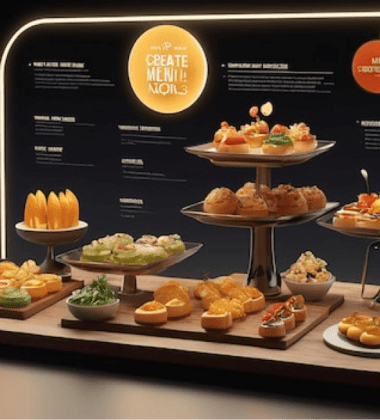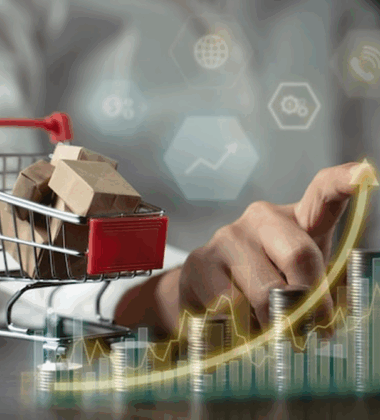The global food and beverage industry is undergoing a seismic shift—driven not by celebrity chefs or viral TikToks, but by artificial intelligence and predictive analytics. As we approach 2025, data-backed food trend prediction is no longer a luxury reserved for billion-dollar brands. It’s a strategic necessity for anyone innovating in food tech, R&D, or consumer experience.
At the heart of this transformation is the intersection between consumer data, AI-powered insights, and real-time market feedback—all of which are being explored and showcased at premier industry gatherings like the Food and Beverage Expo USA.
In this deep-dive trend report, we unpack the future of food innovation, revealing what the data is saying about food trend prediction 2025, and why AI is now the most valuable sous-chef in your product development kitchen.
Why Food Trend Prediction Matters More Than Ever in 2025
Consumer preferences are more fluid, fragmented, and fast-changing than ever before. Cultural shifts, climate concerns, and Gen Z’s values are reshaping what’s on shelves and menus globally.
What used to take years of consumer testing and focus groups can now be modeled, predicted, and validated in weeks using AI and predictive analytics.
Key reasons why predictive food trend insights are crucial:
- Shorter product lifecycles require faster innovation
- Global competition means early trend adoption is a differentiator
- Sustainability demands impact sourcing, ingredients, and packaging
- Personalized nutrition is pushing hyper-targeted product launches
Predictive analytics doesn’t replace human creativity—it empowers it with clarity and confidence.
What AI Is Forecasting for Food Trends in 2025
Here’s what AI-driven trend forecasting tools, social listening platforms, and consumer behavior models are already predicting for the food and beverage industry in 2025:
1. Functional Ingredients Get Personal
Expect an explosion of foods and beverages targeting gut health, immunity, and stress management—with ingredients like adaptogens, nootropics, and prebiotics leading the way.
AI tools are parsing genomics, wellness app data, and lifestyle metrics to identify micro-trends in personal nutrition, enabling hyper-specific product lines like “Sleep-Enhancing Kombucha” or “Mood Balancing Chocolate.”
2. Localized Superfoods Replace Global Ones
Move over acai and goji—AI is detecting rising interest in regionally sourced superfoods that support local economies and reduce carbon footprints.
Think: prickly pear in North Africa, moringa in Southeast Asia, and camel milk in the Middle East.
3. Climate-Resilient Flavors Take the Lead
Drought-resistant crops like millet, amaranth, and cassava are getting an AI-driven PR boost as sustainability becomes a consumer mandate.
Expect to see creative uses of these ingredients in everything from snack bars to alt-dairy.
4. AI-Generated Menus and Recipes
Restaurants and foodservice innovators are using generative AI to develop data-informed flavor combinations based on consumer reviews, ingredient availability, and nutrition goals.
This trend is being prototyped in expos and test kitchens across the globe—including live demos at the Food and Beverage Expo USA.
How Predictive Analytics Works in Food Innovation
Understanding how AI powers food trend prediction 2025 helps R&D teams refine their development process. Here’s how it typically works:
1. Data Aggregation
AI tools pull real-time data from:
- Social media food conversations
- Grocery loyalty programs
- Health apps and wearables
- Restaurant menus and online reviews
- Google search trends
2. Pattern Recognition
Natural language processing (NLP) and machine learning detect correlations between:
- Diet habits and health goals
- Ingredients and emerging preferences
- Recipes and regional interest
3. Forecast Modeling
AI simulates how consumer trends might evolve based on:
- Cultural changes
- Climate impacts
- Seasonal buying patterns
- Economic shifts
4. Product Innovation Insights
The result? Actionable insights like:
- “Consumers in urban Brazil want high-protein snacks with local nuts”
- “Gen Z in North America is moving away from dairy-based protein powders”
- “Middle Eastern consumers are driving demand for functional beverages with saffron and rose water”
From Prediction to Prototype: AI in Action at Food and Beverage Expos
Global expos like Food and Beverage Expo USA have become incubators for AI-driven innovation. These events are no longer just about networking—they’re testing grounds for real-time consumer feedback and predictive tech integration.
At the 2025 expo, expect to see:
- AI-powered flavor testing booths
- Trend forecasting dashboards for exhibitors
- Smart packaging demos with predictive inventory tools
- Virtual co-creation labs using generative AI to prototype new SKUs on the spot
This convergence of technology, trend forecasting, and real-world consumer input creates a loop that makes trend prediction more accurate—and product launches more successful.
👉 Visit the official expo page here
Why R&D Teams Need to Invest in AI Now
Early adopters of AI food trend forecasting are seeing measurable ROI:
- Faster development cycles: 40% shorter on average with AI support
- Higher first-launch success rates: Predictive analysis reduces guesswork
- Better market alignment: Products are more attuned to target segments
- More flexible innovation pipelines: Easily adapt to shifting demand
Whether you’re an SME or an enterprise brand, integrating predictive analytics into your workflow is now essential—not optional.
Key Tools for Predictive Food Trend Research
To stay competitive, food tech innovators and trend forecasters should explore:
- Tastewise – AI-powered platform analyzing 1B+ food and beverage data points monthly
- SPINS – For natural product trend intelligence
- Google Trends + NLP tools – For identifying localized flavor spikes
- AI recipe generators – Like Chef Watson or proprietary LLM-based models
- Expo trend decks and real-time feedback tools from events like Food and Beverage Expo USA
Looking Ahead: The Future of Predictive Food Trends Beyond 2025
The rise of AI and food trend prediction is just beginning. Beyond 2025, expect:
- Predictive personalization engines creating daily menus for individuals
- Zero-waste innovation loops, predicting ingredient overstock and repurposing it into new products
- AI trend councils guiding regulatory and sustainability standards globally
- Digital twins for food innovation, testing prototypes in simulated market environments
Final Takeaway: From Trend-Follower to Trend-Setter
In the world of food innovation, the future favors the data-savvy.
Brands that use AI to guide product development aren’t just predicting the next food trend—they’re shaping it.
By aligning with tools, expos, and processes driven by predictive analytics, you’ll turn uncertainty into opportunity and consumer curiosity into long-term loyalty.
Ready to experience what the future tastes like?
Join the next wave of food innovators at the Food and Beverage Expo USA.





